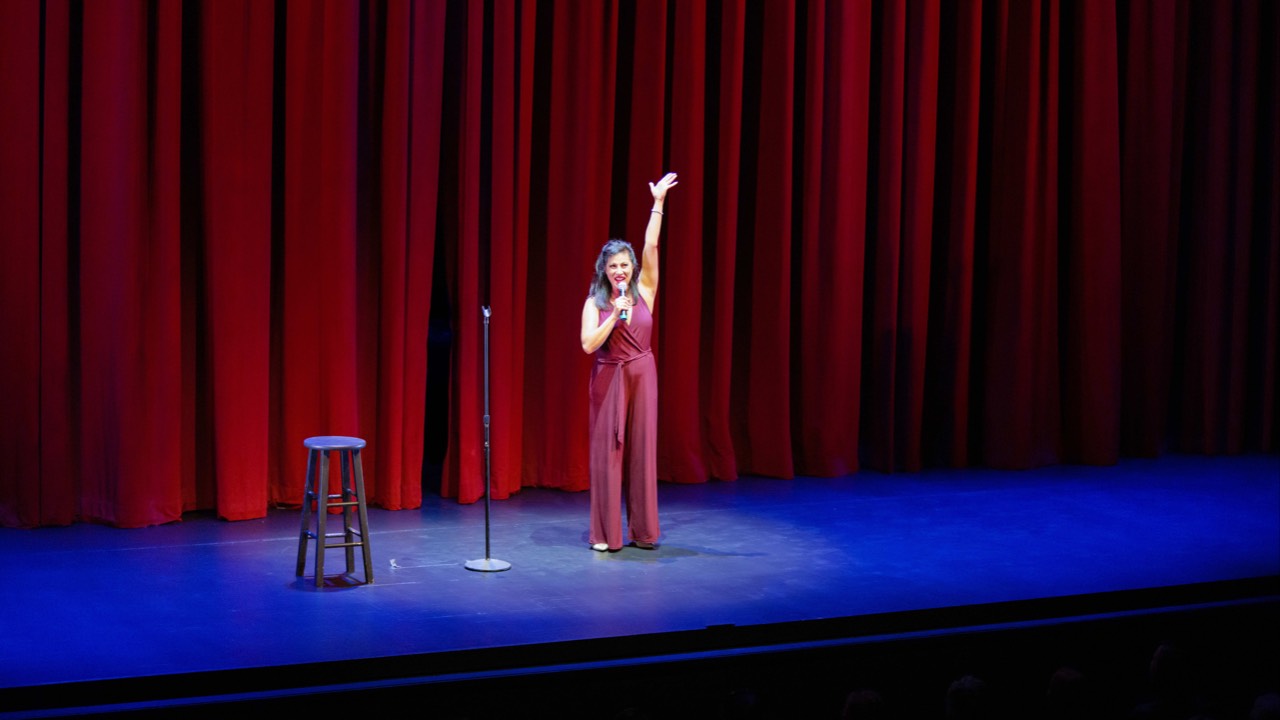Should I Move When I do Public Speaking

Yes, yes and maybe.
We’ve all experienced it. That cozy safe podium that separates us from the audience. Nice little microphone and what feels like a wall to protect our bodies from THEM (the audience).
We’ve also all experienced the dreary drudgery of trying to pay attention to a speaker who stands behind a podium for an hour and doesn’t move. For us visual learners who can’t learn just by hearing – we lose interest almost immediately.
On the opposite end, we’ve seen the speaker who acts like they’re on crack rushing to all edges of the stage frantically pacing, moving and causing us in the audience – anxiety.
YES, YOU SHOULD MOVE…but only with a purpose.
First, get out from behind the podium. I know it’s safe back there. Especially if your pants don’t fit, but it’s a barrier between you and the audience. It’s a physical barrier, visual barrier and emotional barrier. Time to get naked and step out so everyone can see you.
DON’T MOVE for movement sake. We all “leak” energy. This means we are nervous or excited and our bodies want to move to expel it. It’s natural. Some people are hip wigglers, knee or toe poppers, feet shufflers, or sway.
STOP! You’re wasting your energy and it looks sloppy to the audience. In theatre it’s called “planting your feet”. Planting your feet means visualizing roots growing out of the bottoms of your feet and into the stage. Your feet are still, your knees are slightly bent and you stand upright loose and tall. This is called a, “proper acting stance”. It allows you to breathe easily, keep visually clean with movement by holding still, but also prevents you from looking staunch or rigid on the stage.
Move when there is a reason. Move towards the audience or from side to side during certain specific points of your speech. Often stories are a great place to move to add depth, meaning, and interest to help bring the story to life.
Transitioning from one point to another is a great place to move on stage. It helps gives a visual cue to the audience that you are moving on to something new and different.
When wanting to hone in on an important point is another great place to move FORWARD. Moving backwards or away from the audience is a “weak position”, which will do the opposite of making a strong statement.
I recommend watching stand-up comedian, Sebastian Manisculco. He does a tremendous job utilizing movement on the stage to help tell the story.
The issue with moving for many is timing and purpose. Knowing when, how and where to move to help elevate your message is a really valuable skill that comes through practice, training and time.
This is a skill we work hard on in my live performance workshops where I only take a handful of people so that everyone gets stage time. If interested in learning about the next live workshop to enhance your speaking with personal one on one direction, contact me at [email protected] and I’ll get you the info.
PS That's me in the pic...I move - but only with purpose...


